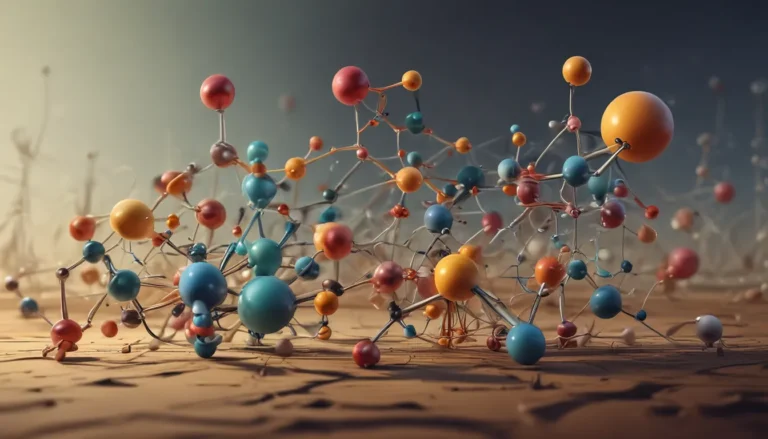A Note About Images: The images used in our articles are for illustration purposes only and may not exactly match the content. They are meant to engage readers, but the text should be relied upon for accurate information.
In the vast landscape of chemistry, there are numerous captivating subjects to explore, each offering a unique glimpse into the mysteries of the natural world. One such enthralling topic is that of amphiprotic species. These remarkable compounds possess the rare ability to both donate and accept protons, rendering them versatile and indispensable in a wide array of chemical reactions and biological processes.
In this comprehensive guide, we will delve deep into the realm of amphiprotic species and unveil 18 fascinating facts that are sure to pique your curiosity. From deciphering the concept of amphiproticity to delving into real-world examples and practical applications, this article aims to shine a light on the extraordinary nature of these compounds. Join us on this enlightening journey as we uncover the secrets behind amphiprotic species and explore why they hold paramount importance in the realm of chemistry.
Unlocking the Dual Nature of Amphiprotic Species
-
Amphiprotic Species as Versatile Acids and Bases: Amphiprotic species stand out in the realm of chemistry due to their unique ability to act as both acids and bases. They can donate or accept protons depending on the conditions they are in, showcasing their dual nature.
-
Water: The Quintessential Amphiprotic Species: Among all amphiprotic species, water reigns supreme as the most well-known example. This essential component of life can either donate a proton to exhibit acidic behavior or accept a proton to display basic properties.
-
The Dual Personality of Amphiprotic Species: Amphiprotic species demonstrate a dual nature by showcasing acidic properties in a basic environment and basic properties in an acidic environment. This versatility allows them to adapt to varying conditions.
Unraveling the Influence of pH on Amphiprotic Behavior
-
pH Dynamics and Amphiprotic Species: The behavior of amphiprotic species is intricately linked to the pH of the surrounding medium. Under basic conditions, they tend to exhibit more acidic properties, while under acidic conditions, they lean towards displaying basic properties.
-
Key Role in Acid-Base Reactions: Acting as pivotal players in acid-base reactions, amphiprotic species can either donate or accept protons to maintain the delicate balance of charges within the reaction, driving the process forward.
-
Amino Acids: Prime Examples of Amphiprotic Species: Amino acids, the fundamental building blocks of proteins, exemplify amphiprotic behavior with their dual amino and carboxyl groups. This dual nature is essential for their biological functions.
The Diverse Landscape of Amphiprotic Species
-
Metal Ions as Amphiprotic Entities: Certain metal ions, including aluminum and zinc, exhibit amphiprotic properties by acting as Lewis acids or bases. They can accept or donate electron pairs, showcasing their versatile nature.
-
Amphoteric Compounds: A synonymous term for Amphiprotic species: Amphiprotic species are sometimes referred to as amphoteric compounds, underscoring their dual capacity to function as both acids and bases.
-
Genesis of Amphiprotic Species: The concept of amphiprotic species was pioneered by the eminent American chemist Gilbert N. Lewis, renowned for his groundbreaking work on chemical bonding.
Harnessing the Potential of Amphiprotic Species in Science
-
Beyond Individual Molecules: Amphiprotic behavior extends not only to individual molecules but also to entire substances like hydroxides, oxides, and select salts, highlighting the widespread presence of this intriguing property.
-
The Isoelectric Point: Each amphiprotic species possesses a unique isoelectric point, which denotes the pH at which it attains electrical neutrality, offering valuable insights into its behavior.
-
Essential Role in Protein Functionality: Proteins heavily rely on the amphiprotic properties of amino acids for their structural integrity and proper functioning. This balance of charges is vital for their stability and biological activity.
Predicting Amphiprotic Behavior and its Implications
-
Lewis Acid-Base Theory as a Predictive Tool: The Lewis acid-base theory serves as a valuable tool in forecasting the amphiprotic behavior of a species by evaluating its electron-pair donating or accepting capabilities.
-
Impact on Solution pH: The presence of amphiprotic species in a solution can influence its pH by contributing to ionic equilibrium and potentially altering the overall acidity or alkalinity.
-
Varied Intensity of Amphiprotic Behavior: Not all amphiprotic species exhibit the same degree of amphiprotic behavior. Some may lean more towards exhibiting acidic traits, while others may showcase a propensity for basic properties.
Real-World Examples of Amphiprotic Species
-
Bromate Ion: A Paradigmatic Amphiprotic Species: The bromate ion (BrO3-) serves as a notable example of an amphiprotic species, showcasing its ability to donate or accept protons based on the prevailing conditions.
-
Buffer Systems and Amphiprotic Properties: The significance of amphiprotic properties comes to the fore in buffer systems, where certain species maintain stable pH levels and prevent drastic fluctuations in acidity or alkalinity.
Embracing the Significance of Amphiprotic Species Across Disciplines
- Interdisciplinary Applications: The utility of amphiprotic species transcends the boundaries of chemistry and finds relevance in diverse scientific fields such as biology, environmental science, and pharmaceuticals.
In a nutshell, amphiprotic species stand as captivating entities in the realm of chemistry, showcasing their prowess in donating and accepting protons with finesse. Their versatility extends to various applications, spanning the domains of biological processes to chemical reactions. Unraveling the intricacies of these compounds is indispensable for scientists and researchers, propelling advancements in knowledge and innovative applications.
Exploring the nuances of amphiprotic species opens up a world of possibilities, paving the way for groundbreaking discoveries and scientific progress. Whether studying their pivotal role in acid-base reactions or envisioning novel molecular designs with amphiprotic attributes, these compounds continue to intrigue chemists worldwide. As we delve deeper into the realms of chemistry, the study of amphiprotic species promises to enrich our understanding of the fundamental principles governing the natural world.
FAQs: Deriving Clarity on Amphiprotic Species
- Q: What defines an amphiprotic species?
-
A: Amphiprotic species possess the unique capability of both donating and accepting protons in chemical reactions, acting as acids or bases depending on the circumstances.
-
Q: How does the amphiprotic nature of a species impact solution behavior?
-
A: The amphiprotic nature of a species stabilizes the pH of a solution by neutralizing excess hydroxide or hydrogen ions, maintaining a balanced environment.
-
Q: Can you cite examples of amphiprotic species?
-
A: Prominent examples include water (H2O), hydrogen carbonate ion (HCO3-), and amino acids like glycine, showcasing the dual proton donation and acceptance properties.
-
Q: In what manner are amphiprotic species involved in acid-base reactions?
-
A: During acid-base reactions, amphiprotic species can function as either acids or bases, facilitating the transfer of protons between species to form new compounds.
-
Q: Are all substances amphiprotic in nature?
- A: No, not all substances exhibit amphiprotic behavior, as it is a unique property reserved for specific molecular structures capable of dual proton interactions.
As we draw the curtains on this insightful exploration of amphiprotic species, we invite you to delve further into the intricacies of chemical science. Whether you are a student, researcher, or an inquisitive enthusiast, there is always more to learn and discover in the captivating domain of chemistry. Stay tuned for more fascinating insights into the enigmatic world of science!






